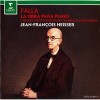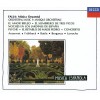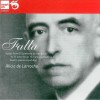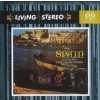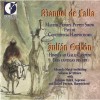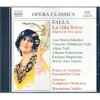Composers
Manuel de Falla y Matheu (23 November 1876 – 14 November 1946) was a Spanish Andalusian composer of romantic music. With Isaac Albéniz, Enrique Granados and Joaquín Turina he is one of Spain's most important musicians of the first half of the 20th century.
Falla was born as Manuel María de los Dolores Falla y Matheu in Cádiz. He was the son of José María Falla y Franco and María Jesús Matheu y Zabal. His early teachers in music were his mother and grandfather; at the age of nine he was introduced to his first piano professor, Eloísa Galluzo. Little is known of that period of his life, but his relationship with his teacher was soon ended after she decided to then enter in a convent, Sisters of Charity, to become a nun. In 1889 he continued his piano lessons with Alejandro Odero and learned the techniques of harmony and counterpoint from Enrique Broca. At age 15 he became interested in literature and journalism and founded the literary magazines El Burlón and El Cascabel. In 1893 he was inspired by a concert of Edvard Grieg's works, later saying that at the time he felt that "my definitive vocation is music".
Madrid
In 1896 he moved to Madrid where he attended the Real Conservatorio de Música y Declamación. He studied piano with José Tragó, a colleague of Isaac Albéniz and composition with Felipe Pedrell. In 1897 he composed Melodia for cello and piano and dedicated it to Salvador Viniegra who hosted evenings of chamber music that Falla attended. In 1899, by unanimous vote, he was awarded the first prize at the piano competition at his school of music. He premiered his first works: Romanza para violonchelo y piano, Nocturno para piano, Melodía para violonchelo y piano, Serenata andaluza para violín y piano, and Cuarteto en Sol y Mireya. That same year he started to use de with his first surname, making Manuel de Falla the name he became known as from that time on. When only the surname is used, however, the de is omitted.
In 1900 he composed his Canción para piano and various other vocal and piano pieces. He premiered his Serenata andaluza y Vals-Capricho para piano in the Ateneo de Madrid. Due to the precarious financial position of his family he began to teach piano classes.
It was from Pedrell, during the Madrid period, that Falla became interested in native Andalusian music, particularly Andalusian flamenco (specifically cante jondo), the influence of which can be strongly felt in many of his works. Among his early pieces are a number of zarzuelas like La Juana y la Petra and La casa de tócame Roque. On 12 April 1902 he premiered Los amores de la Inés in the Teatro Cómico de Madrid. The same year he met the composer Joaquín Turina and saw his Vals-Capricho y Serenata andaluza published by the Society of Authors. The following year he composed and performed Allegro de concierto for the Madrid Royal Conservatory competition. Pianist Enrique Granados took first prize but the Society of Authors published Falla's works Tus ojillos negros and Nocturno. Falla then began his collaboration with composer Amadeo Vives on the zarzuelas Prisionero de guerra, El cornetín de órdenes and La cruz de Malta (only fragments of these works survive).
His first important work was the one-act opera La vida breve (Life is Short, or The Brief Life, written in 1905, though revised before its premiere in 1913). With a libretto by Carlos Fernández Shaw, La vida breve won Falla first prize in the Real Academia de Bellas Artes de San Fernando musical competition. In April 1905 he won the first prize in a piano competition sponsored by the firm of Ortiz and Cussó. On 15 May his work Allegro de concierto premiered in the Ateneo de Madrid and on 13 November the Real Academia presented him with his prize for La vida breve.
Paris
In 1907 at the advice of Joaquín Turina and Víctor Mirecki Larramat, Falla moved to Paris. There he met a number of composers who had an influence on his style, including the impressionists Maurice Ravel, Claude Debussy and Paul Dukas. In 1908 King Alfonso XIII awarded him a royal grant that enabled him to remain in Paris while he finished his Cuatro piezas españolas. Meanwhile, the dramatist Paul Milliet translated the libretto of La vida breve into French for its French premiere on 1 April 1913 at the Municipal Casino in Nice. In 1910 Falla met Igor Stravinsky and traveled briefly to London. He wrote Siete canciones populares españolas which he finished in mid-1914. Shortly afterward World War I began when Germany declared war and Falla returned to Madrid. While at no stage was he a prolific composer, it was then that he entered into his mature creative period.
Return to Madrid
In Madrid he composed several of his best known pieces, including:
The nocturne for piano and orchestra Nights in the Gardens of Spain (Noches en los jardines de España, 1916)
The ballet El amor brujo (Love the Magician, 1915) which includes the much excerpted and arranged Ritual Fire Dance
The ballet The Magistrate and the Miller's Wife (El corregidor y la molinera) which, after revision, became The Three-Cornered Hat (El sombrero de tres picos, 1917) and was produced by Serge Diaghilev with set design and costumes by Pablo Picasso.
Granada period
From 1921 to 1939 Manuel de Falla lived in Granada, where he organized the Concurso de Cante Jondo in 1922. In Granada he wrote the puppet opera El retablo de maese Pedro (Master Peter's Puppet Show, 1923) and a concerto for harpsichord and chamber ensemble (Harpsichord Concerto, 1926). The puppet opera marked the first time the harpsichord had entered the modern orchestra; and the concerto was the first for harpsichord written in the 20th Century. Both of these works were written with Wanda Landowska in mind. In these works, the Spanish folk influence is somewhat less apparent than a kind of Stravinskian neoclassicism.
Also in Granada, Falla began work on the large-scale orchestral cantata Atlàntida (Atlantis), based on the Catalan text L'Atlàntida by Jacint Verdaguer. Falla considered Atlàntida to be the most important of all his works; posterity has not agreed with this verdict, and performances of the piece have been extremely rare. Verdaguer's text gives a mythological account of how the submersion of Atlantis created the Atlantic ocean, thus separating Spain and Latin America, and how later the Spanish discovery of America reunited what had always belonged together. Falla tried but failed to prevent the murder of his close friend, the poet Federico García Lorca in 1936.
Argentina
Falla continued work on Atlàntida after moving to Argentina in 1939, following Francisco Franco's victory in the Spanish Civil War. The orchestration of the piece remained incomplete at his death and was completed posthumously by Ernesto Halffter. He also premiered his Suite Homenajes in Buenos Aires in November 1939. In 1940, he was named a Knight of the Order of King Alfonso X of Castile. Franco's government offered him a large pension if he would return to Spain, but he refused.
Falla did spend some time teaching in exile. Among his notable pupils was composer Rosa García Ascot. His health began to decline and he moved to a house in the mountains where he was tended by his sister María del Carmen de Falla. He died of cardiac arrest on 14 November 1946 in Alta Gracia, in the Argentine province of Córdoba. In 1947 his remains were brought back to Spain and entombed in the cathedral at Cádiz. One of the lasting honors to his memory is the Manuel de Falla Chair of Music in the Faculty of Philosophy and Letters at Complutense University of Madrid. His image appeared on Spanish currency notes for some years. Manuel de Falla never married and had no children.
Recently Added
| Country: | Spain |
| Period: | Romantique |
Biography
Manuel de Falla y Matheu (23 November 1876 – 14 November 1946) was a Spanish Andalusian composer of romantic music. With Isaac Albéniz, Enrique Granados and Joaquín Turina he is one of Spain's most important musicians of the first half of the 20th century.
Falla was born as Manuel María de los Dolores Falla y Matheu in Cádiz. He was the son of José María Falla y Franco and María Jesús Matheu y Zabal. His early teachers in music were his mother and grandfather; at the age of nine he was introduced to his first piano professor, Eloísa Galluzo. Little is known of that period of his life, but his relationship with his teacher was soon ended after she decided to then enter in a convent, Sisters of Charity, to become a nun. In 1889 he continued his piano lessons with Alejandro Odero and learned the techniques of harmony and counterpoint from Enrique Broca. At age 15 he became interested in literature and journalism and founded the literary magazines El Burlón and El Cascabel. In 1893 he was inspired by a concert of Edvard Grieg's works, later saying that at the time he felt that "my definitive vocation is music".
Madrid
In 1896 he moved to Madrid where he attended the Real Conservatorio de Música y Declamación. He studied piano with José Tragó, a colleague of Isaac Albéniz and composition with Felipe Pedrell. In 1897 he composed Melodia for cello and piano and dedicated it to Salvador Viniegra who hosted evenings of chamber music that Falla attended. In 1899, by unanimous vote, he was awarded the first prize at the piano competition at his school of music. He premiered his first works: Romanza para violonchelo y piano, Nocturno para piano, Melodía para violonchelo y piano, Serenata andaluza para violín y piano, and Cuarteto en Sol y Mireya. That same year he started to use de with his first surname, making Manuel de Falla the name he became known as from that time on. When only the surname is used, however, the de is omitted.
In 1900 he composed his Canción para piano and various other vocal and piano pieces. He premiered his Serenata andaluza y Vals-Capricho para piano in the Ateneo de Madrid. Due to the precarious financial position of his family he began to teach piano classes.
It was from Pedrell, during the Madrid period, that Falla became interested in native Andalusian music, particularly Andalusian flamenco (specifically cante jondo), the influence of which can be strongly felt in many of his works. Among his early pieces are a number of zarzuelas like La Juana y la Petra and La casa de tócame Roque. On 12 April 1902 he premiered Los amores de la Inés in the Teatro Cómico de Madrid. The same year he met the composer Joaquín Turina and saw his Vals-Capricho y Serenata andaluza published by the Society of Authors. The following year he composed and performed Allegro de concierto for the Madrid Royal Conservatory competition. Pianist Enrique Granados took first prize but the Society of Authors published Falla's works Tus ojillos negros and Nocturno. Falla then began his collaboration with composer Amadeo Vives on the zarzuelas Prisionero de guerra, El cornetín de órdenes and La cruz de Malta (only fragments of these works survive).
His first important work was the one-act opera La vida breve (Life is Short, or The Brief Life, written in 1905, though revised before its premiere in 1913). With a libretto by Carlos Fernández Shaw, La vida breve won Falla first prize in the Real Academia de Bellas Artes de San Fernando musical competition. In April 1905 he won the first prize in a piano competition sponsored by the firm of Ortiz and Cussó. On 15 May his work Allegro de concierto premiered in the Ateneo de Madrid and on 13 November the Real Academia presented him with his prize for La vida breve.
Paris
In 1907 at the advice of Joaquín Turina and Víctor Mirecki Larramat, Falla moved to Paris. There he met a number of composers who had an influence on his style, including the impressionists Maurice Ravel, Claude Debussy and Paul Dukas. In 1908 King Alfonso XIII awarded him a royal grant that enabled him to remain in Paris while he finished his Cuatro piezas españolas. Meanwhile, the dramatist Paul Milliet translated the libretto of La vida breve into French for its French premiere on 1 April 1913 at the Municipal Casino in Nice. In 1910 Falla met Igor Stravinsky and traveled briefly to London. He wrote Siete canciones populares españolas which he finished in mid-1914. Shortly afterward World War I began when Germany declared war and Falla returned to Madrid. While at no stage was he a prolific composer, it was then that he entered into his mature creative period.
Return to Madrid
In Madrid he composed several of his best known pieces, including:
The nocturne for piano and orchestra Nights in the Gardens of Spain (Noches en los jardines de España, 1916)
The ballet El amor brujo (Love the Magician, 1915) which includes the much excerpted and arranged Ritual Fire Dance
The ballet The Magistrate and the Miller's Wife (El corregidor y la molinera) which, after revision, became The Three-Cornered Hat (El sombrero de tres picos, 1917) and was produced by Serge Diaghilev with set design and costumes by Pablo Picasso.
Granada period
From 1921 to 1939 Manuel de Falla lived in Granada, where he organized the Concurso de Cante Jondo in 1922. In Granada he wrote the puppet opera El retablo de maese Pedro (Master Peter's Puppet Show, 1923) and a concerto for harpsichord and chamber ensemble (Harpsichord Concerto, 1926). The puppet opera marked the first time the harpsichord had entered the modern orchestra; and the concerto was the first for harpsichord written in the 20th Century. Both of these works were written with Wanda Landowska in mind. In these works, the Spanish folk influence is somewhat less apparent than a kind of Stravinskian neoclassicism.
Also in Granada, Falla began work on the large-scale orchestral cantata Atlàntida (Atlantis), based on the Catalan text L'Atlàntida by Jacint Verdaguer. Falla considered Atlàntida to be the most important of all his works; posterity has not agreed with this verdict, and performances of the piece have been extremely rare. Verdaguer's text gives a mythological account of how the submersion of Atlantis created the Atlantic ocean, thus separating Spain and Latin America, and how later the Spanish discovery of America reunited what had always belonged together. Falla tried but failed to prevent the murder of his close friend, the poet Federico García Lorca in 1936.
Argentina
Falla continued work on Atlàntida after moving to Argentina in 1939, following Francisco Franco's victory in the Spanish Civil War. The orchestration of the piece remained incomplete at his death and was completed posthumously by Ernesto Halffter. He also premiered his Suite Homenajes in Buenos Aires in November 1939. In 1940, he was named a Knight of the Order of King Alfonso X of Castile. Franco's government offered him a large pension if he would return to Spain, but he refused.
Falla did spend some time teaching in exile. Among his notable pupils was composer Rosa García Ascot. His health began to decline and he moved to a house in the mountains where he was tended by his sister María del Carmen de Falla. He died of cardiac arrest on 14 November 1946 in Alta Gracia, in the Argentine province of Córdoba. In 1947 his remains were brought back to Spain and entombed in the cathedral at Cádiz. One of the lasting honors to his memory is the Manuel de Falla Chair of Music in the Faculty of Philosophy and Letters at Complutense University of Madrid. His image appeared on Spanish currency notes for some years. Manuel de Falla never married and had no children.
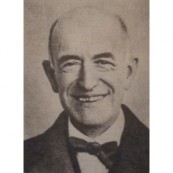

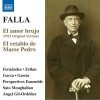
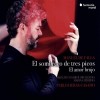
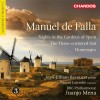
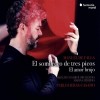

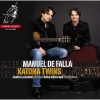
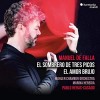
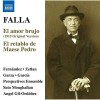
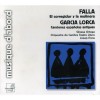
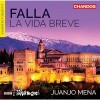
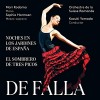


![Russian legends - David Oistrakh [20 CD]](http://static.classicalm.com/repository/collection-cover/small/267-img1318418713553266.jpg)
![Russian legends - Viktor Tretiakov [6 CD]](http://static.classicalm.com/repository/collection-cover/small/271-img1318800770253179.jpg)
![Great Voices Of The Century - Sopranos, The Greatest Arias [CD1 of 4]](http://static.classicalm.com/repository/collection-cover/small/1401-img1403276640837603.jpg)
![Deutsche Grammophon Classic Gold [CD 2 of 3]](http://static.classicalm.com/repository/collection-cover/small/1315-img1361382127512512.jpg)
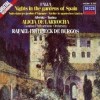
![Russian legends - Lazar Berman [7 CD]](http://static.classicalm.com/repository/collection-cover/small/263-img1318187682202830.jpg)
![Russian legends - Daniel Shafran [7 CD]](http://static.classicalm.com/repository/collection-cover/small/277-img1319146356180506.jpg)
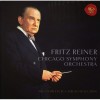
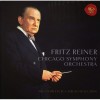
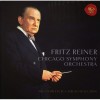
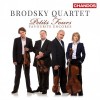
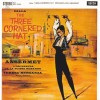
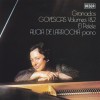
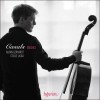

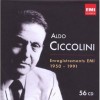
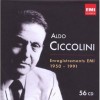
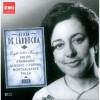
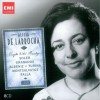
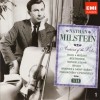
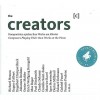
![Teresa Berganza - The Spanish Soul [CD1of3]](http://static.classicalm.com/repository/disk-cover/small/3672-img1406550148330827.jpg)
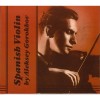
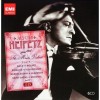
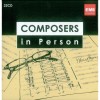
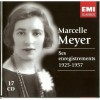
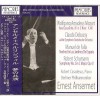
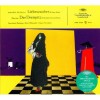
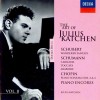
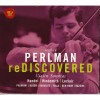
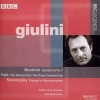
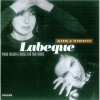
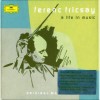
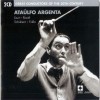
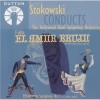
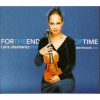

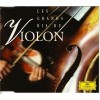


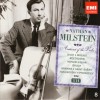
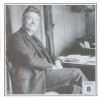
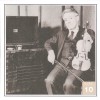
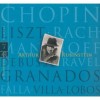
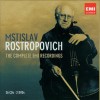
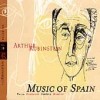
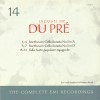
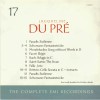
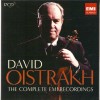
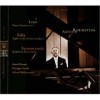
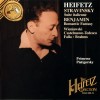
![The Heifetz Collection, Volume 2 [3 CD]](http://static.classicalm.com/repository/disk-cover/small/717-img1315129517717299.jpg)
![The Heifetz Collection, Volume 3 [2 CD]](http://static.classicalm.com/repository/disk-cover/small/719-img1315174118757085.jpg)
![The Heifetz Collection, Volume 6 [2 CD]](http://static.classicalm.com/repository/disk-cover/small/725-img1315427995644122.jpg)
![The Heifetz Collection, Volume 46 [2 CD]](http://static.classicalm.com/repository/disk-cover/small/1001-img1318023469472305.jpg)
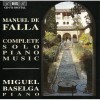
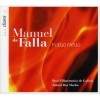
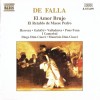
![Falla - La Vida Breve, El Amor Brujo, El Sombrero de Tres Picos [De Burgos, Giulini]](http://static.classicalm.com/repository/composition-cover/small/30500-img1500221384199209.jpg)
